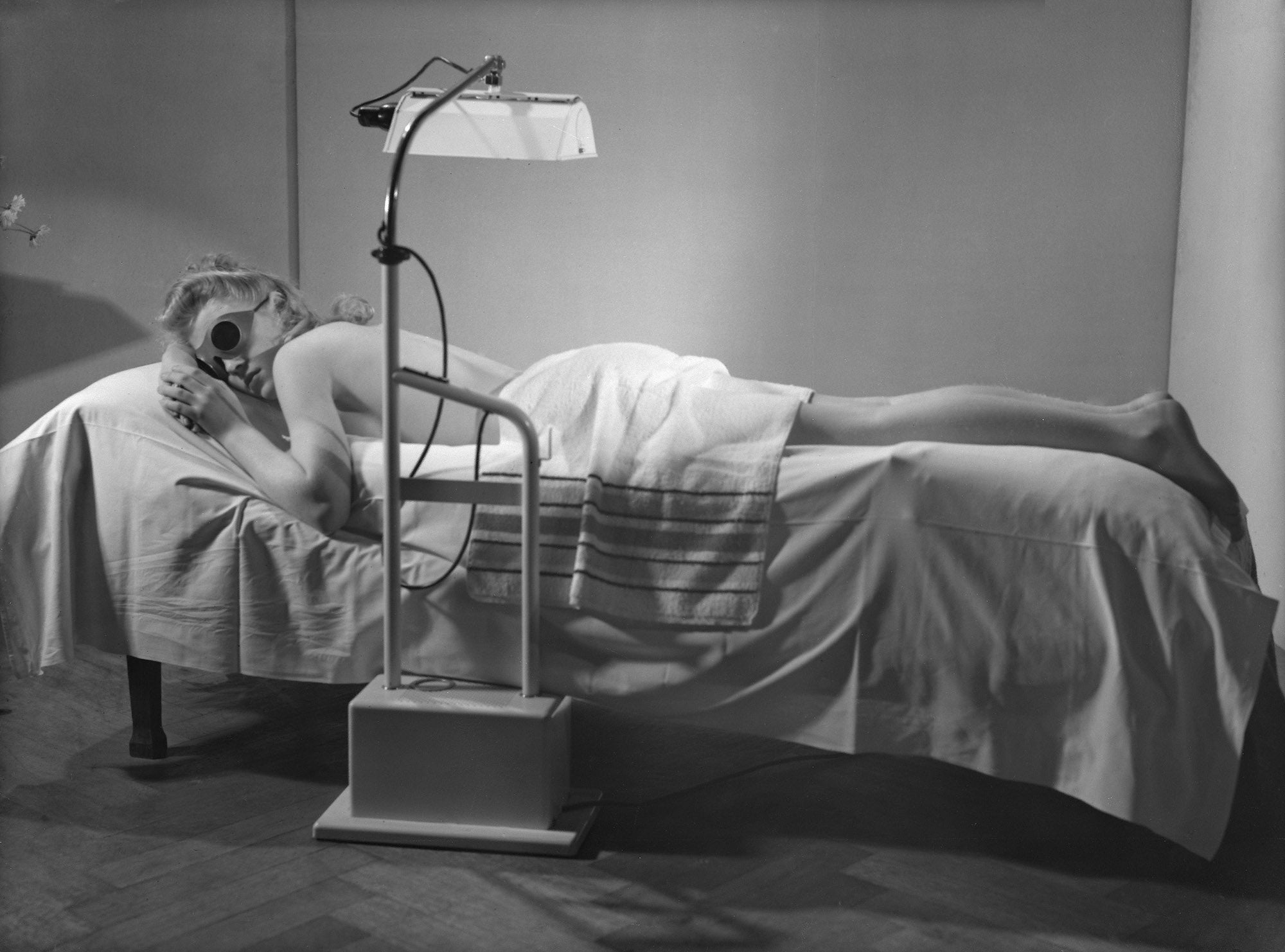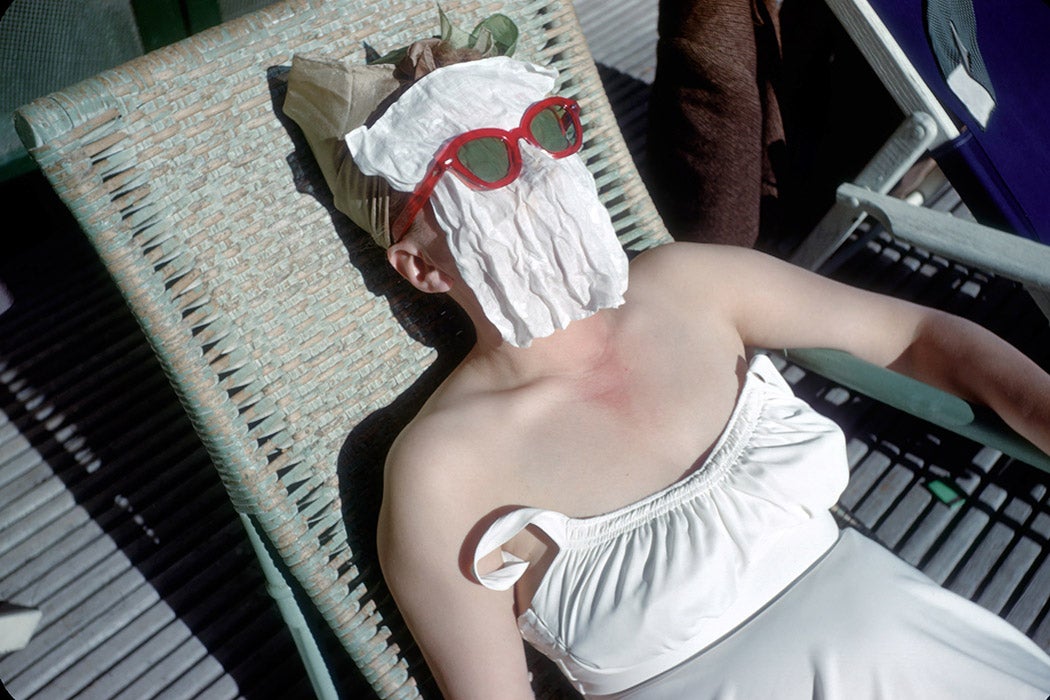The meaning of a tanned body has evolved in the West over the course of three centuries. As scholars Phillip Vannini and Aaron M. McCright explain, in the eighteenth century, “tanned skin connoted humble class origins, as most unskilled workers and farmers would be tanned from protracted sun exposure during the workday.”
Today, however, we’re bombarded with ads for vacations and swimwear presenting tanned bodies as aspirational: healthy, attractive, and affluent.
It was in the twentieth century that meaning of tanned skin flipped. The fashionability of tanning rose with the popularity of outdoor leisure, particularly for women. After the 1920s, browned summer skin symbolized wealth rather than field work: someone with the freedom to play tennis or go to the beach. Tanning became a fashion imperative, especially after Coco Chanel stated, “The 1929 girl must be tanned. A golden tan is the index of chic!”
The desire to get tanned, and stay tanned all year round, led to the first tanning salon opening in the United States in 1978. They soon become a staple of malls everywhere. Vannini and McCright interviewed clients of tanning salons to understand their choices. In their assessment, the tanned body is an object with semiotic power in contemporary society, and they wanted to see how it was interpreted by those who sought artificial tans. They found that
tanned white skin may connote that its possessor is a healthy, relatively affluent, sociable, physically fit, and attractive person, for example, and because the value of this object empowers, enhances, or endows the appearance of an enselfed body, we can say that tanned skin has not only a symbolic meaning but also semiotic power.
Some salon clients (referred to as “tanorexics” or “tanoholics”) become so attached to the meaning of their tan, or the tanning experience, they visited the UV beds daily. They related that a tan made them look younger, more vibrant, and that they felt better about themselves for the time spent under the lamp.

Vannini and McCright noted that tanning has different meanings, cross-culturally: While their subjects were mostly white Americans, among people of color in the US, “the more prevalent historical trend has been for people of color to ‘whiten’ or bleach their skin.” In Asia, paleness is widely held to be more desirable, and skin lightening products are a major part of the beauty industry.
Weekly Newsletter
The seductive power of a tanned body operates in tension with an awareness of skin cancer, and the dangers of tanning. Vannini and McCright’s keen tanning subjects downplayed the health impact, but they clearly were aware of the dangers and sometimes offered strategies that made their tanning bed use “safe”.
The fact that decades after the health dangers of tanning became understood, the aesthetic of bronzed skin is nonetheless part of our imagery of health and success, shows the cultural influence of this semiotic power. Rather than abandon it, we seek newer ways to achieve it. In place of UV beds, we use tanning creams and sprays, for instance. And the British Medical Journal even reports the use of unlicensed drugs injected to induce a tan.
Despite its dangerous downsides, a golden glow remains in fashion.
Support JSTOR Daily! Join our new membership program on Patreon today.







